For those special occasions when a smoked turkey is the order of the day, it can be a bit of a daunting task getting that perfectly cooked texture. After all, nobody wants to cut into tough and dry meat that makes even carving tough!
Fear not – this blog post will provide you with an easy and foolproof guide on how to reheat a smoked turkey so that it tastes just as succulent & delicious as if it had been freshly cooked while retaining its signature juicy texture.
Whether for leftovers or just for dinner tonight, you won’t want to miss these simple steps that can take your smoked turkey from ho-hum back to its original juicy state. With this advice in hand, reunion dinners with your family will be just as delicious as ever.
Keep reading our excellent tips so that you can start enjoying yummy smoked turkeys whenever and wherever mealtime calls for it!
How To Reheat A Smoked Turkey
If you have leftover smoked turkey and are wondering how to reheat a smoked turkey, there are a few different methods to choose from.
Each method has its own pros and cons, so it’s up to you to decide which one works best for you based on your preferences and available equipment.
Here are some methods for reheating smoked turkey:
1. Microwave Method
The microwave method is the quickest and easiest way to reheat smoked turkey, but it’s also the most likely to result in rubbery, overcooked meat.
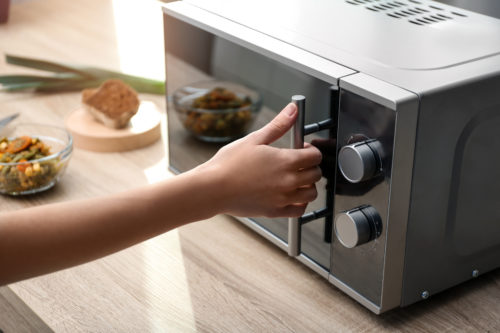
To minimize the risk of this happening, follow these steps:
1️⃣ Place the turkey in a microwave-safe dish and cover it with a lid or plastic wrap. If you’re using plastic wrap, make sure it’s microwave-safe and vent it by poking a few holes in it with a fork.
2️⃣ Microwave the turkey on medium power (50%) for 2-3 minutes per pound, or until it’s heated through. Check the temperature of the thickest part of the turkey with a meat thermometer to make sure it’s reached at least 165°F.
3️⃣ Let the turkey rest for a minute or two before serving to allow the heat to distribute evenly.
Tips for Preventing Rubbery Turkey
🔸 To prevent the turkey from becoming rubbery, make sure to cover it with a damp paper towel or plastic wrap.
🔸 Add a little bit of water or broth to the dish before microwaving to help keep the meat moist.
🔸 Don’t overcook the turkey. If it’s heated through and reaches a safe temperature, it’s done.
🔸 Slice the turkey before microwaving to help it heat evenly.
🔸 Let the turkey rest for a few minutes before slicing and serving.
⏳ Estimated Cooking Time: 2-3 minutes per pound on medium power (50%).
Pros & Cons of This Method
| Pros | Cons |
|---|---|
| ✅ Quick and easy. ✅ Ideal for small quantities of smoked turkey. | ⛔️ Can easily dry out the meat if overcooked. ⛔️ More difficult to keep the meat moist due to lack of liquid in the dish. |
2. Oven Method (Baking)
The oven method is slower but provides more control over the reheating process, so it’s ideal for larger quantities of smoked turkey or when you need to ensure that your leftovers are heated through evenly and remain succulent.
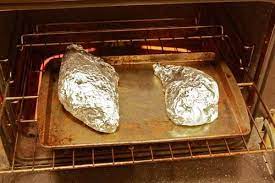
The key is finding just the right temperature and baking time so that your smoked turkey doesn’t become dry or rubbery.
Here’s how to reheat a smoked turkey in oven:
1️⃣ Preheat your oven to 325°F.
2️⃣ Place the turkey in a roasting pan or baking dish and cover it with foil.
3️⃣ Bake the turkey for 10-15 minutes per pound, or until it’s heated through. Check the temperature with a meat thermometer to make sure it’s reached at least 165°F.
4️⃣ Remove the foil for the last 10-15 minutes of cooking to allow the skin to crisp up.
5️⃣ Let the turkey rest for a few minutes before carving and serving.
Tips for Preventing Dry Turkey:
🔸 To prevent the turkey from drying out, make sure to cover the pan with foil during the initial cooking time.
🔸 Add a little bit of water or broth to the pan before baking to help keep the meat moist.
🔸 Cover the turkey with foil to prevent it from drying out, but remove it for the last 10-15 minutes of cooking to allow the skin to crisp up.
🔸 Don’t overcook the turkey. If it’s heated through and reaches a safe temperature, it’s done.
⏳ Estimated Cooking Time: 10-15 minutes per pound at 325°F.
Pros & Cons of This Method
| Pros | Cons |
|---|---|
| ✅ Allows for more control over the reheating process. ✅ Ideal for large quantities of smoked turkey. | ⛔️ Takes longer than microwaving. ⛔️ Can still dry out if overcooked. |
3. Skillet method (Pan-frying)
The skillet method is perfect for when you want to reheat just a few slices of smoked turkey and get them nice and crisp on the outside while keeping them juicy inside. All you need is a nonstick skillet and some butter, oil, or fat of your choice.
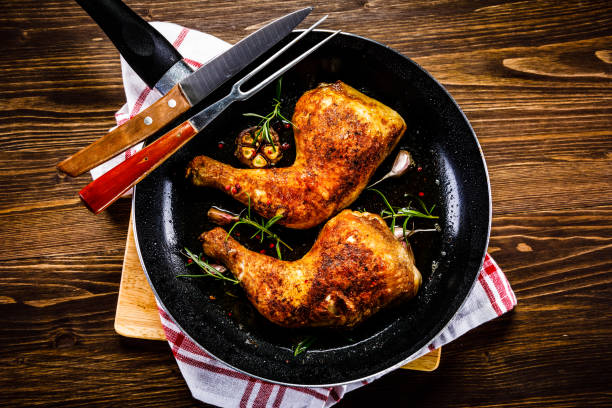
Here’s how to do it:
1️⃣ Heat the skillet over medium heat and add enough butter/oil/fat to coat the bottom.
2️⃣ Add the turkey slices and cook for 2-3 minutes per side, or until lightly browned and heated through.
3️⃣ Let the slices rest for 1-2 minutes before serving to allow the heat to distribute evenly.
Tips for Preventing Dry Turkey:
🔸 Use a nonstick skillet and enough butter/oil/fat to coat the bottom of the pan, but not too much as it can cause splattering.
🔸 Don’t overcook the turkey. If it’s lightly browned and heated through, it’s done.
🔸 Let the slices rest for a few minutes before serving to ensure that they’re tender and juicy inside.
⏳ Estimated Cooking Time: 2-3 minutes per side.
Pros & Cons of This Method
| Pros | Cons |
|---|---|
| ✅ Quick and easy. ✅ Ideal for small quantities of smoked turkey. | ⛔️ Can dry out quickly if overcooked. ⛔️ More difficult to keep the meat moist due to lack of liquid in the pan. ⛔️ Requires more attention than oven or microwaving, as it needs to be flipped halfway through cooking. |
4. Sous vide method
The sous vide method is a bit more complicated than the other methods, but it produces the most consistent results and allows you to reheat the turkey without drying it out or making it rubbery.
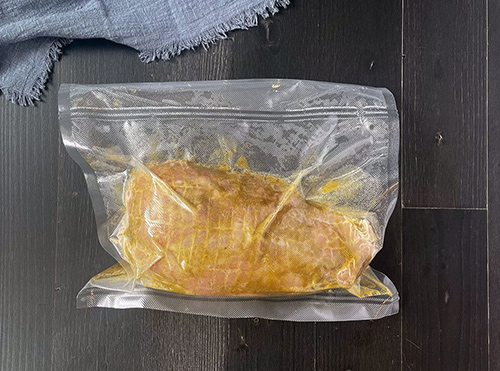
Here’s how to do it:
1️⃣ Fill a sous vide container with water and set the temperature to 150°F.
2️⃣ Vacuum-seal the turkey in a sous vide bag and place it in the water.
3️⃣ Cook the turkey for 1-2 hours, depending on the size of the turkey, until it reaches at least 165°F.
4️⃣ Remove the turkey from the bag and pat it dry with paper towels.
5️⃣ Sear the turkey in a hot skillet or on a grill to crisp up the skin, if desired.
6️⃣ Let the turkey rest for a few minutes before carving and serving.
Pros & Cons of This Method
| Pros | Cons |
|---|---|
| ✅ Produces the most consistent results, prevents the turkey from drying out or becoming rubbery. | ⛔️ Requires special equipment (sous vide machine and vacuum sealer), takes longer than the other methods. |
⏳ Estimated Cooking Time: 1-2 hours at 150°F.
Other Methods
🔸 Steam: Place the turkey in a steamer basket over boiling water and steam it for 5-10 minutes per pound, or until it’s heated through.
🔸 Griddle: Slice the turkey and cook it on a hot griddle for a minute or two on each side, or until it’s heated through and lightly browned.
In conclusion, there are several methods for reheating smoked turkey, each with its own pros and cons. Choose the method that works best for you based on your preferences and available equipment, and enjoy your delicious leftovers!
More Microwave Reheating Guide
- Can You Reheat Mussels? YES, Here’s The Best Way
- Can You Reboil Eggs? The Truth Finally Revealed!
- Best Way To Reheat Taco Bell to Mouthwatering Perfection!
- How To Reheat Steak In Microwave Without Ruining It!
- How To Reheat Mcdonalds Burger In Microwave – Quick and Easy Way!
Serving Suggestions
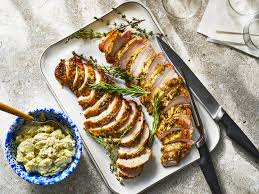
✔️ Serve with mashed potatoes and gravy.
✔️ Stuff the smoked turkey slices into a warm pita with some shredded lettuce, tomato, and sauce.
✔️ Add to a wrap or sandwich with your favorite condiments.
✔️ Top off salads with thin slices of smoked turkey for extra flavor and protein.
✔️ Use the smoked turkey slices as an ingredient in casseroles or pasta dishes.
✔️ Serve with a side of roasted vegetables for a full meal.
✔️ Turn it into tacos by adding your favorite toppings and seasonings.
✔️ Make a delicious smoked turkey soup with some veggies and herbs.
✔️ Dice up the leftovers and add to omelets for breakfast.
In order to get the most out of your reheated smoked turkey, make sure you don’t overcook it and be careful not to dry it out! With any luck, you’ll have plenty of delicious leftovers that will last you all week long. Bon Appétit!
How to Reheat a Whole Smoked Turkey
If you’ve got a whole smoked turkey left over from a holiday feast or special occasion, you may be wondering how to reheat it to enjoy it again.
While reheating a whole smoked turkey may seem like a daunting task, it’s actually quite simple if you follow a few basic steps.
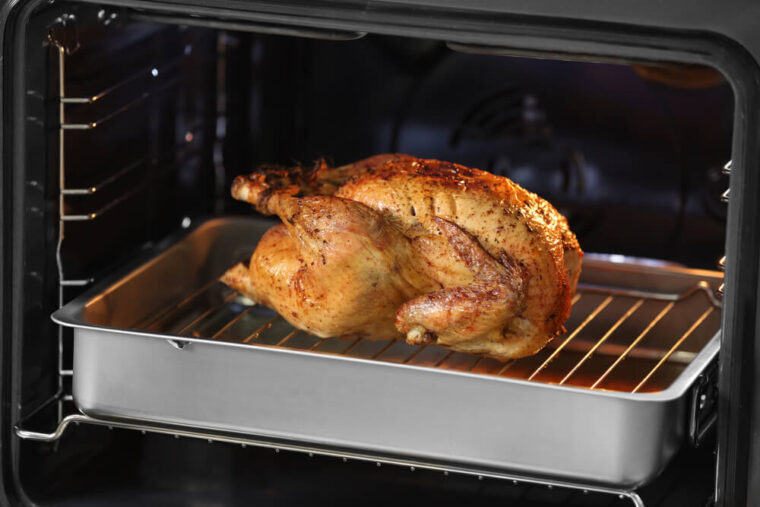
We’ll show you how to reheat a whole smoked turkey to perfection.
Step 1: Thaw the Turkey
Before you can even think about reheating your whole smoked turkey, you need to make sure it’s completely thawed.
You should always thaw your turkey in the refrigerator to prevent bacteria growth. Depending on the size of your turkey, it may take a few days to fully thaw in the fridge.
Once it’s thawed, you’re ready to move on to the next step.
Step 2: Preheat Your Oven
Preheat your oven to 325°F. This temperature is low enough to prevent the turkey from drying out while it reheats, but high enough to ensure that it reaches a safe internal temperature.
If you prefer a crispier skin, you can raise the temperature to 350°F, but be careful not to dry out the meat.
Step 3: Prep Your Turkey
Remove the turkey from the refrigerator and let it come to room temperature for about an hour. This will help it cook more evenly and prevent the outside from getting overcooked while the inside is still cold.
Place the turkey in a roasting pan and cover it tightly with aluminum foil. You can add a little bit of water or chicken broth to the bottom of the pan to keep the meat moist.
Step 4: Reheat the Turkey
Place the covered roasting pan in the preheated oven and let the turkey reheat for about 10-15 minutes per pound. This means that a 15-pound turkey will take about 2.5-3.5 hours to reheat.
Check the internal temperature of the turkey with a meat thermometer – it should reach at least 165°F in all parts of the turkey, including the thickest part of the breast and the innermost part of the thigh.
Step 5: Let it Rest
Once your turkey has reached the proper internal temperature, remove it from the oven and let it rest for at least 20 minutes before carving. This will give the juices time to redistribute throughout the meat, making it more tender and juicy.
Step 6: Carve and Serve
Now it’s time to carve your turkey and serve it to your guests! Make sure to slice the meat against the grain to keep it tender, and serve it with your favorite sides and gravy.
With these simple steps, you can easily reheat a whole smoked turkey and enjoy a delicious meal that’s just as good as the day it was smoked.
So the next time you have leftovers or want to enjoy a perfectly heated turkey, use these tips and tricks to get the job done right.
Tips for Reheating a Smoked Turkey
Smoked turkey is a delicious and flavorful addition to any meal, but reheating it can be a bit tricky. If not done properly, the turkey can become dry and lose its flavor.
To help you avoid this, we’ve put together some tips for reheating a smoked turkey that will ensure it stays moist and flavorful.
1. Use a Meat Thermometer
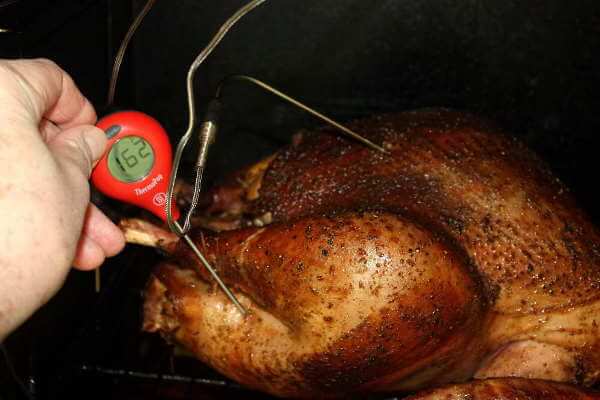
Using a meat thermometer is essential when reheating a smoked turkey.
Make sure that the internal temperature of the turkey reaches at least 165°F to ensure that it is fully reheated and safe to eat.
Insert the thermometer into the thickest part of the turkey to get an accurate reading.
2. Wrap the Turkey Tightly
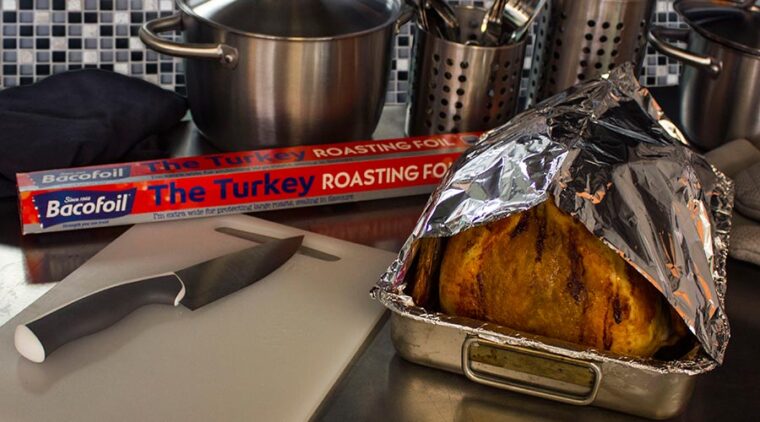
When reheating a smoked turkey, it’s important to keep the moisture locked in.
Wrapping the turkey tightly in aluminum foil or plastic wrap will help to keep it moist and prevent it from drying out.
3. Add Liquid
Adding a bit of liquid to the turkey when reheating it can also help to keep it moist. You can use chicken broth, turkey broth, or even water.
Simply pour the liquid over the turkey before wrapping it tightly in foil or plastic wrap.
4. Reheat Slowly
When reheating a smoked turkey, it’s important to take your time. Reheat it slowly at a low temperature to ensure that it heats evenly and the moisture is retained.
A good rule of thumb is to reheat the turkey at 325°F for approximately 10 minutes per pound.
5. Let it Rest
Allow the turkey to rest for a few minutes after reheating it. This will help to redistribute the juices throughout the turkey and make it more flavorful.
Common Mistakes to Avoid
When reheating a smoked turkey, there are a few common mistakes that people often make. These mistakes can result in a dry and flavorless turkey. Here are some things to avoid:
⛔️ Overheating the turkey: Overheating the turkey can cause it to dry out and lose its flavor. Be sure to reheat it slowly at a low temperature.
⛔️ Undercooking the turkey: Undercooking the turkey can be dangerous and can result in food poisoning. Use a meat thermometer to ensure that the turkey is fully reheated.
⛔️ Not wrapping the turkey tightly: Wrapping the turkey tightly in foil or plastic wrap is essential for keeping it moist. Make sure that it is wrapped tightly to prevent it from drying out.
By following these tips for reheating a smoked turkey and avoiding common mistakes, you can ensure that your turkey stays moist and flavorful. Happy reheating!
Nutritional Value of the Smoked Turkey
Smoked turkey is a popular food item that is enjoyed by many people. It is a delicious and healthy alternative to traditional roasted turkey, and it is often used in sandwiches, salads, and other dishes. But what is the nutritional value of smoked turkey?
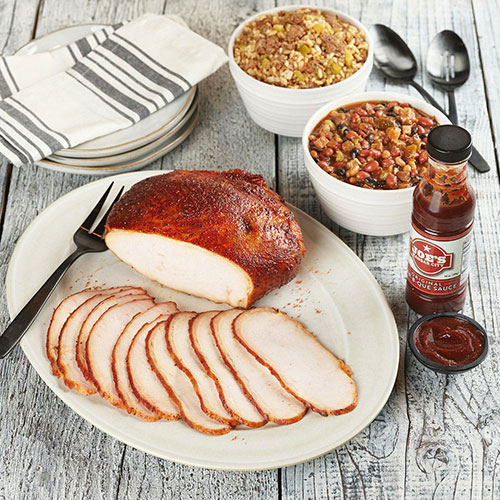
1️⃣ Protein
One of the main nutritional benefits of smoked turkey is protein. Protein is an essential nutrient that is needed for the growth and repair of muscles, bones, and other tissues in the body.
Smoked turkey is a lean source of protein, with 3 ounces of smoked turkey containing around 25 grams of protein. This makes it an excellent choice for athletes and anyone looking to build or maintain muscle mass.
2️⃣ Low in Fat
Another benefit of smoked turkey is that it is low in fat. This makes it an ideal choice for anyone looking to maintain a healthy weight or reduce their risk of heart disease and other health problems associated with high-fat diets.
Smoked turkey is also a good source of monounsaturated and polyunsaturated fats, which are healthy fats that can help lower cholesterol levels and reduce inflammation in the body.
3️⃣ Vitamins and Minerals
Smoked turkey is also a good source of vitamins and minerals.
It is rich in vitamin B6, which is important for brain function and the production of red blood cells. Smoked turkey also contains vitamin B12, which is essential for the nervous system and the production of DNA.
In addition, smoked turkey is a good source of minerals such as iron, zinc, and selenium, which are essential for maintaining good health.
4️⃣ Low in Sodium
One concern that many people have with smoked turkey is its sodium content. Smoked turkey can be high in sodium, which can increase blood pressure and increase the risk of heart disease.
However, there are low-sodium options available, and by choosing a lower sodium smoked turkey, you can still enjoy the nutritional benefits without the negative health effects.
Overall, smoked turkey is a healthy and nutritious food that should be a part of everyone’s diet. It is a great source of protein, low in fat, and rich in vitamins and minerals.
By choosing a low-sodium option, you can enjoy the nutritional benefits of smoked turkey without the negative health effects.
So next time you’re looking for a healthy and delicious meal, consider adding smoked turkey to your plate.
How Reheating Affects its Nutritional Content
Many people wonder how reheating affects the nutritional content of their food. Does it affect the vitamins and minerals? Does it change the macronutrient composition?
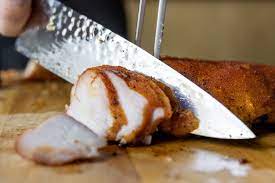
✔️ The first thing to understand is that the nutritional content of food can be affected by a variety of factors, including cooking methods, storage conditions, and even the type of food.
This means that the impact of reheating on nutritional content is not always straightforward, and can vary depending on the specific food being reheated.
✔️ One of the primary concerns when it comes to reheating food is the loss of vitamins and minerals.
Some vitamins, such as vitamin C and folate, are particularly sensitive to heat and can be damaged or destroyed during cooking and reheating. This means that reheating can cause a loss of these vitamins, which can be detrimental to overall health.
However, it’s important to note that not all vitamins are affected equally by heat.
Vitamins A, D, E, and K are fat-soluble vitamins, which means they are more stable and less likely to be affected by reheating.
Additionally, some minerals, such as iron and zinc, are not affected by reheating and can even become more bioavailable as a result of the cooking process.
✔️ Another concern when it comes to reheating is the potential for the formation of harmful compounds.
When food is heated, certain chemical reactions can occur that can produce compounds such as acrylamide, heterocyclic amines (HCAs), and polycyclic aromatic hydrocarbons (PAHs). These compounds have been linked to an increased risk of cancer and other health issues.
While the formation of these compounds can occur during cooking and reheating, there are steps that can be taken to minimize their formation.
For example, reheating food at a lower temperature or for a shorter amount of time can help reduce the formation of these compounds.
✔️ Finally, it’s important to consider the impact of reheating on the macronutrient composition of food. Reheating can affect the texture and flavor of food, which can impact how much of it is consumed.
Additionally, reheating can cause changes in the amount of carbohydrates, fats, and proteins in a food. For example, reheating can cause the breakdown of complex carbohydrates into simple sugars, which can affect blood sugar levels.
In conclusion, reheating can have an impact on the nutritional content of food. While the loss of vitamins and the formation of harmful compounds are concerns, there are steps that can be taken to minimize these effects.
By being mindful of cooking methods, storage conditions, and reheating practices, it’s possible to enjoy the convenience of reheating while still maintaining the nutritional quality of food.
FAQs on How To Reheat A Smoked Turkey
How do you reheat a precooked smoked turkey?
Reheating a precooked smoked turkey is easy! Simply place the turkey in an oven-safe dish and cover with foil.
Preheat your oven to 350 degrees Fahrenheit, then bake for 15-20 minutes until the internal temperature of the turkey reaches 165°F. Let the turkey rest for 5 minutes before serving.
Can you microwave smoked turkey?
Yes, you can microwave smoked turkey. Place the turkey in a microwave-safe dish and cover with a damp paper towel to help keep it moist.
Microwave on high for 1-2 minutes per ounce until the internal temperature reaches 165°F. Let the turkey rest for 5 minutes before serving.
Carefully remove the dish from the microwave as it may be hot.
What are some ways to add flavor to smoked turkey?
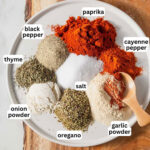
There are several ways to add flavor to smoked turkey!
Consider adding your favorite spices or herbs, such as garlic powder, paprika, oregano, or thyme. You can also try marinating the turkey in a flavorful sauce or dressing before cooking.
Finally, consider adding ingredients to the cooking dish, such as slices of lemon, onion, or garlic.
What’s the best way to reheat a fully smoked turkey?
The best way to reheat a fully smoked turkey is by wrapping it in foil and baking it in the oven.
Preheat your oven to 350 degrees Fahrenheit, then bake for 15-20 minutes until the internal temperature of the turkey reaches 165°F. Let the turkey rest for 5 minutes before serving.
Be sure to keep an eye on the turkey as it reheats so that it does not overcook or burn.
Is there any danger associated with reheating foods?
Yes, there are potential dangers associated with reheating foods such as vitamins being destroyed or harmful compounds forming.
It’s important to be mindful of cooking methods, storage conditions, and reheating practices in order to minimize these effects and maintain the nutritional quality of food.
Additionally, reheating can cause changes in the amount of carbohydrates, fats, and proteins in a food. For example, reheating can cause the breakdown of complex carbohydrates into simple sugars, which can affect blood sugar levels.
Therefore it’s important to take note of these factors when reheating foods.
Is there any way to reduce the formation of harmful compounds during reheating?
Yes! There are steps that can be taken to minimize the formation of harmful compounds such as acrylamide, heterocyclic amines (HCAs), and polycyclic aromatic hydrocarbons (PAHs).
For example, reheating food at a lower temperature or for a shorter amount of time can help reduce the formation of these compounds.
Additionally, using moist cooking methods such as steaming or boiling can also help reduce their formation.
Finally, adding herbs and spices to the food before reheating can also help mitigate their formation.
What are some other healthy ways to enjoy smoked turkey?
Smoked turkey can be enjoyed in a variety of ways! It makes a delicious sandwich or wrap filling, and it can also be added to salads or soups.
You can also cube the turkey and add it to stir-fries, omelets, burritos, tacos, or even casseroles for an easy protein boost. Enjoy!
Top Takeaways
Reheating a smoked turkey is not a difficult task if done correctly. By following the tips and tricks outlined in this guide, you can ensure that your smoked turkey is reheated to perfection every time.
Remember to use a meat thermometer to check the internal temperature, wrap the turkey in foil to prevent it from drying out, and to let it rest for a few minutes before slicing.
With these simple steps, you can enjoy a delicious and juicy smoked turkey, even days after it was originally cooked.
We hope this guide has helped you learn more about how to reheat a smoked turkey! Enjoy your meal! Thanks for reading!



